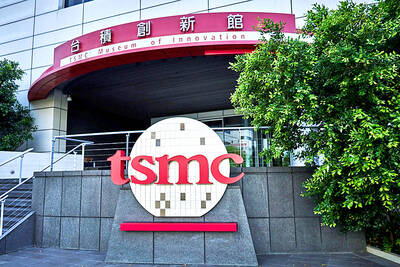Novartis AG agreed to pay US$3.4 billion for eye-disease assets that Takeda Pharmaceutical Co is selling after its US$62 billion acquisition of Shire PLC earlier this year.
The main product in the deal is Xiidra, a prescription eye drop for adults with dry-eye disease.
Along with US$3.4 billion in cash upfront, Novartis said in a news release that it would pay as much as US$1.9 billion in milestones.

Photo: EPA-EFE
Xiidra had about US$400 million in sales last year, Novartis said.
Novartis expects the deal to close in the second half of the year and plans to bring over about 400 employees.
The drug could generate peak sales of as much as US$1.4 billion, according to Elizabeth Krutoholow, a Bloomberg Intelligence analyst.
The transaction is the first major deal for Takeda since CEO Christophe Weber said in January that the Japanese company plans to move quickly on disposals to reduce debt after its takeover of Shire.
Novartis has just spun off its Alcon contact-lens and surgical-products unit, but previously transferred eye drugs from the unit to the main pharma business in 2016.
Xiidra competes with Allergan PLC’s blockbuster Restasis. Dry-eye disease is a common condition that can hinder daily activities ranging from reading to driving.
Under chief executive Vas Narasimhan, Novartis is narrowing its focus on cutting-edge drugs for cancer and rare diseases, and betting on treatments such as gene therapies to potentially cure severe illnesses.
In his first year at the helm, the new chief split with Alcon, ditched a stake in a consumer-health venture and carried out three crucial acquisitions to revamp the Swiss firm.
Takeda has laid out a scenario of a potential US$10 billion in divestments in an effort to deleverage as net borrowings more than doubled with the takeover of Shire.
The company is looking to divest overseas businesses where it is not an industry leader and does not have critical mass.

SEEKING CLARITY: Washington should not adopt measures that create uncertainties for ‘existing semiconductor investments,’ TSMC said referring to its US$165 billion in the US Taiwan Semiconductor Manufacturing Co (TSMC, 台積電) told the US that any future tariffs on Taiwanese semiconductors could reduce demand for chips and derail its pledge to increase its investment in Arizona. “New import restrictions could jeopardize current US leadership in the competitive technology industry and create uncertainties for many committed semiconductor capital projects in the US, including TSMC Arizona’s significant investment plan in Phoenix,” the chipmaker wrote in a letter to the US Department of Commerce. TSMC issued the warning in response to a solicitation for comments by the department on a possible tariff on semiconductor imports by US President Donald Trump’s

The government has launched a three-pronged strategy to attract local and international talent, aiming to position Taiwan as a new global hub following Nvidia Corp’s announcement that it has chosen Taipei as the site of its Taiwan headquarters. Nvidia cofounder and CEO Jensen Huang (黃仁勳) on Monday last week announced during his keynote speech at the Computex trade show in Taipei that the Nvidia Constellation, the company’s planned Taiwan headquarters, would be located in the Beitou-Shilin Technology Park (北投士林科技園區) in Taipei. Huang’s decision to establish a base in Taiwan is “primarily due to Taiwan’s talent pool and its strength in the semiconductor

Industrial production expanded 22.31 percent annually last month to 107.51, as increases in demand for high-performance computing (HPC) and artificial intelligence (AI) applications drove demand for locally-made chips and components. The manufacturing production index climbed 23.68 percent year-on-year to 108.37, marking the 14th consecutive month of increase, the Ministry of Economic Affairs said. In the first four months of this year, industrial and manufacturing production indices expanded 14.31 percent and 15.22 percent year-on-year, ministry data showed. The growth momentum is to extend into this month, with the manufacturing production index expected to rise between 11 percent and 15.1 percent annually, Department of Statistics

An earnings report from semiconductor giant and artificial intelligence (AI) bellwether Nvidia Corp takes center stage for Wall Street this week, as stocks hit a speed bump of worries over US federal deficits driving up Treasury yields. US equities pulled back last week after a torrid rally, as investors turned their attention to tax and spending legislation poised to swell the US government’s US$36 trillion in debt. Long-dated US Treasury yields rose amid the fiscal worries, with the 30-year yield topping 5 percent and hitting its highest level since late 2023. Stocks were dealt another blow on Friday when US President Donald